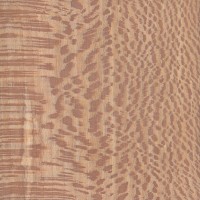 |
Common Name(s): London Plane, European Plane Scientific Name: Platanus x acerifolia Distribution: Western Europe Tree Size: 65-115 ft (20-35 m) tall, 3-5 ft (1-1.5 m) trunk diameter Average Dried Weight: 35 lbs/ft3 (560 kg/m3) Specific Gravity (Basic, 12% MC): .46, .56 Janka Hardness: 940 lbf (4,180 N) Modulus of Rupture: 10,830 lbf/in2 (74.7 MPa) Elastic Modulus: 1,291,000 lbf/in2 (8.90 GPa) Crushing Strength: 5,910 lbf/in2 (40.8 MPa) Shrinkage: Radial: ~6%, Tangential: ~10%, Volumetric: ~16%, T/R Ratio: ~1.7 |
Color/Appearance: Similar to maple, the wood of London Plane trees is predominantly comprised of the sapwood, with some darker heartwood streaks also found in most boards. (Though it is not too uncommon to also see entire boards of heartwood too.) The sapwood is white to light pinkish tan, while the heartwood is a darker reddish brown. London Plane also has very distinct ray flecks present on quartersawn surfaces—giving it a freckled appearance—and it is sometimes even called “Lacewood,” though it bears little botanical relation to the tropical species of Lacewood.
Grain/Texture: London Plane has a fine, even texture that’s very similar to maple. The grain is usually straight.
Endgrain: Diffuse-porous; small to medium pores, numerous; solitary and in radial multiples and clusters; tyloses occasionally present, though not easily seen with lens; growth rings distinct due to lighter color of latewood and decreased pore frequency; medium to very wide rays easily visible without lens, noded, wide spacing; parenchyma rare or absent.
Rot Resistance: London Plane is rated as non-durable to perishable regarding decay resistance, and is susceptible to insect attack.
Workability: Overall, London Plane works easily with both hand and machine tools, though tearout can sometimes occur in the rays of perfectly quartersawn sections during planing. London Plane turns, glues, and finishes well.
Odor: No characteristic odor.
Allergies/Toxicity: Besides the standard health risks associated with any type of wood dust, no further health reactions have been associated with Sycamore. See the articles Wood Allergies and Toxicity and Wood Dust Safety for more information.
Pricing/Availability: Usually moderately priced if available domestically, though London Plane is commonly sold as quartersawn boards, which can increase the cost.
Sustainability: This wood species is not listed in the CITES Appendices or on the IUCN Red List of Threatened Species.
Common Uses: Veneer, plywood, interior trim, pallets/crates, flooring, furniture, carvings, and other small specialty wood objects.
Comments: Not to be confused with with European Sycamore—which is actually just a species of maple (Acer pseudoplatanus)—London Plane is a hybrid of American Sycamore (Platanus occidentalis) and Oriental Plane (P. orientalis).
Scans/Pictures: A special thanks to Steve Earis for providing the wood sample and turned photo of this wood species.


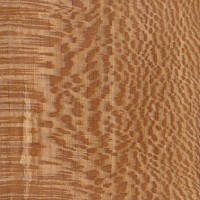
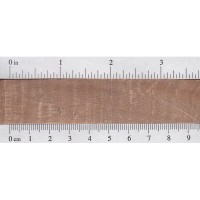
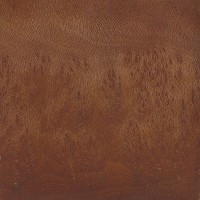
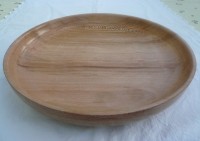



Plane tree is a very enjoyable tree species to use. If you match its essential rays, its bright rays, you can design wonderful works.
Wondering if it has much sap content? On the hunt for a tree suitable for glass mould making – I.e. like beech, or cherry or pear, which are usually used.
The plane tree is an excellent tree. I use it in musical instrument production. I produce oud, lute and lyre musical instruments. I will never give up on the plane tree.
What part of the lute do you use it for? (ribs, table, neck, etc) I’m using American plane for the back and sides of a hurdy-gurdy (crank-lyre or crank-organ)
I discovered that it was spalted london plane. The grain on this woods is absolutly gorgeous. I’m not quite sure what finish I will put on it. If anyone has any suggestions on this it would be appreciated. I was also curious as to its value.
Great site! Thanks for your effort. I finally ID’d some wood I had as London Plane thanks to your site.
I just finished this. The wood is beautiful, but a little expensive. This is around 15 coats of polyurethane.
I have turned a platter using this wood. It is beautiful. I finished it with finishing oil. Danish oil is also good.
Mark, are you in the UK? If you’re in the US, then I’d guess it’s probably the nearly-identical Sycamore (Platanus occidentalis) instead of London Plane.
I’d finish it with a water-based polyurethane because it won’t yellow and would preserve the lighter shade of the wood. Just my .02
I inhereted around 150 bdft of what I thought was a rough sawn spalted maple. I began planing the wood down and preparing it for my liquor cabinet project. Once I started planing the wood it was obvious that it was not maple. After looking through your database, I discovered that it was spalted london plane. The grain on this woods is absolutly gorgeous. I’m not quite sure what finish I will put on it. If anyone has any suggestions on this it would be appreciated. I was also curious as to its value.